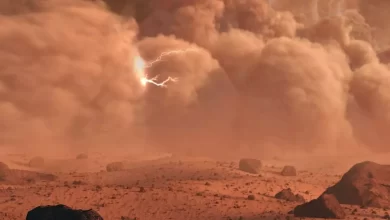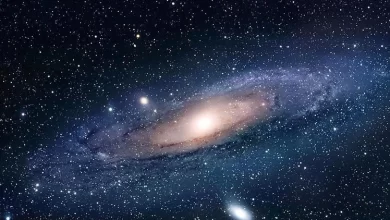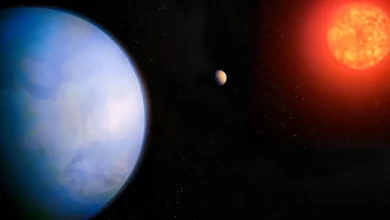
The images of Mars obtained as part of China’s Tianwen-1 mission have been combined to create the colourful and highest resolution global map of Mars so far.
The Tianwen-1 mission, which the China National Space Administration (CNSA) placed in Mars orbit in July 2020, aimed to investigate the geology, atmosphere and water traces of the Red Planet. One of the most remarkable results of this mission was the highest resolution global colour map of Mars ever created by researchers from the Chinese Academy of Sciences (CAS). This map is an important reference for future manned Mars missions and studies to be carried out for the exploration of the planet.
The highest resolution map of Mars
The Tianwen-1 mission comprises six different robotic elements: an orbiter, a lander, two deployable cameras, a remote camera and the Zhurong surface vehicle. For almost 1298 days, the mission’s orbiter collected numerous images for remote sensing of the Martian surface. These images were processed by the CAS team into this global colour map with a spatial resolution of more than 1 kilometre (0.62 miles). This map is currently the highest resolution map of Mars.

Global maps of Mars were also created with images obtained from previous Mars missions. The spatial resolution of these maps made with images obtained during missions such as Mariner 9, Viking 1 and 2, Mars Global Surveyor (MGS), Mars Reconnaissance Orbiter (MRO), Mars Express (MEX) and Mars Odyssey was significantly lower than the map created by Tianwen-1. For example, the MGS MOC-WA Atlas Mosaic map had a resolution of 232 metres/pixel, while the Mars Odyssey mission’s THEMIS Global Mosaic map offered a resolution of about 100 metres/pixel in the infrared band. The Tianwen-1 orbiter collected 14,757 images with resolutions ranging from 57 to 197 metres.

During the same period, Tianwen-1’s Mars Mineralogical Spectrometer acquired a total of 325 strips of data in the visible and near-infrared bands with spatial resolutions ranging from 265 to 800 metres. The collected images also provided global coverage of the Martian surface. While scientists were examining and analysing all the collected images, the real colours of the Martian surface were obtained thanks to the data collected. All this resulted in the publication of Tianwen-1 Mars Global Colour Orthomosaic 76m v1, which has a spatial resolution of 76 m and a horizontal accuracy of 68 m. You can download the map from the link we have provided or from the bibliography section.
Will benefit future missions
This map can serve as a geographical reference for other space agencies and partner organisations to map the Martian surface with even higher resolution and detail. It could also be used by space agencies to select sites for future robotic explorers that will continue to search for clues about Mars’ past. It could also come in handy if NASA and China send crewed missions to Mars, scheduled to begin in the 2030s or early 2040s.






